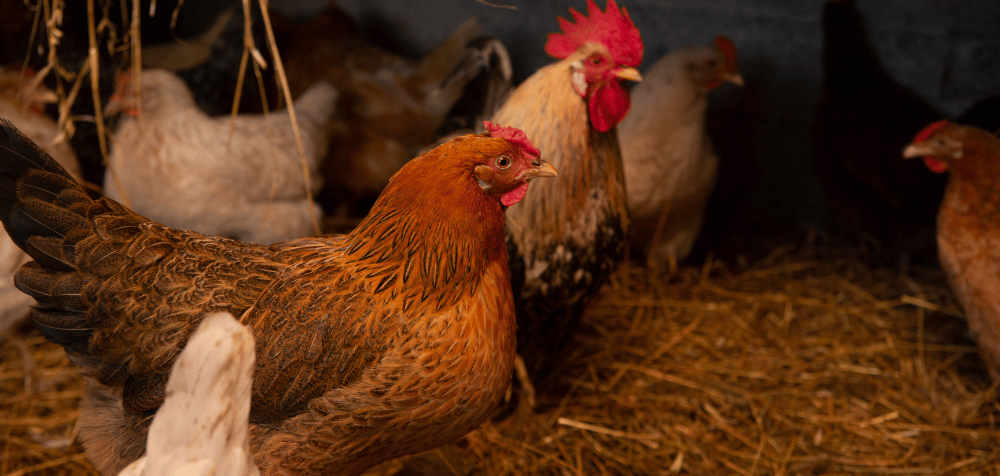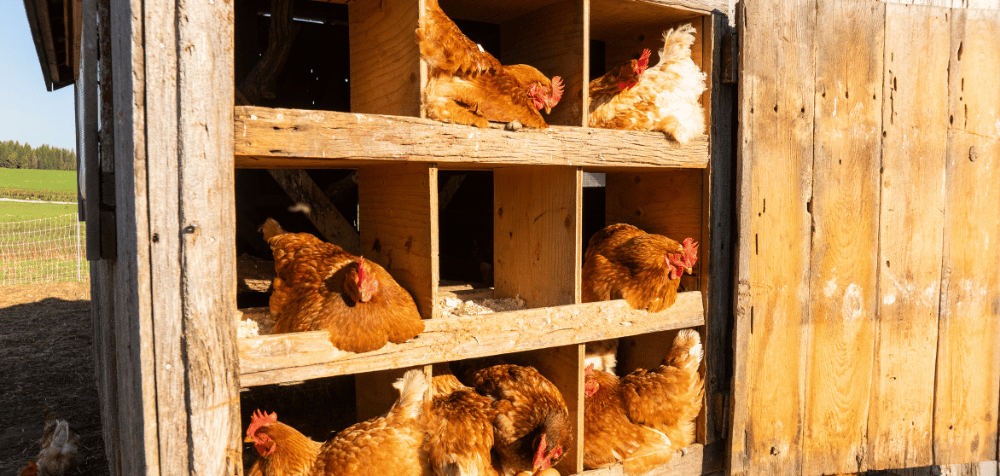Raising chickens comes with a variety of considerations, and one important factor that’s often overlooked is chicken coop lighting.
While it may seem like a small detail, the right lighting can have a significant impact on your chickens’ well-being, egg production, and overall quality of life.
The Importance of Chicken Coop Lighting
Chickens are very sensitive to light, and their natural behaviors, including laying eggs and eating, are closely tied to the amount of daylight they receive. In the wild, they would be in tune with the sun, but domesticated chickens housed in coops often need additional lighting, especially in colder months when natural daylight is scarce.
Proper chicken coop lighting ensures that your chickens get the right amount of light to keep them healthy and productive.
Why Lighting Affects Egg Production
One of the key reasons lighting is important in a chicken coop is its direct impact on egg production. Chickens are biologically programmed to lay more eggs when there is ample daylight.
Typically, hens need about 14 to 16 hours of light each day to maintain regular egg-laying patterns.
During winter months, when the days are shorter, adding artificial chicken coop lighting can make up for the lack of natural sunlight.
When hens don’t get enough light:
- Egg production decreases.
- Their reproductive cycles slow down.
- They may stop laying eggs altogether for weeks or months.
By installing artificial lighting, you’re essentially tricking your chickens into thinking that the day is longer than it actually is, thus encouraging them to continue laying eggs even when daylight hours are short.
Health Benefits of Chicken Coop Lighting

It’s not just about egg production, though. Chicken coop lighting plays a significant role in your chickens’ overall health and well-being.
Just like humans, chickens have circadian rhythms that are influenced by light. Without a proper light schedule, your chickens can become lethargic, stressed, and more prone to illnesses.
Some of the health benefits of proper lighting include:
- Improved immune system: Chickens with adequate light exposure tend to have stronger immune systems, reducing the risk of disease outbreaks.
- Better mood and behavior: With the right lighting, chickens are more active, less aggressive, and generally happier.
- Regulated feeding patterns: Chickens with enough light are more likely to eat at regular intervals, ensuring they get the nutrients they need for optimal health.
What Type of Chicken Coop Lighting is Best?
Not all lighting is created equal, especially when it comes to chickens. The type of light you choose can have a huge impact on your flock. Here are a few options to consider:
1. LED Lights
LED lights are becoming increasingly popular for chicken coop lighting due to their energy efficiency and long lifespan. They emit a bright, consistent light that’s perfect for simulating daylight. Plus, LEDs are more cost-effective in the long run because they use less energy compared to traditional bulbs.
2. Incandescent Bulbs
These are the classic light bulbs that have been used in homes for decades. While they can be used in chicken coops, they’re not as energy-efficient as LED lights. They also produce heat, which can be beneficial in winter but problematic during the warmer months.
3. Solar-powered Lights
If you’re looking for an eco-friendly option, solar-powered lights are a great choice. They charge during the day and provide light at night without adding to your electricity bill. However, they might not be as reliable during overcast days or long stretches of poor weather.
4. Timer-Controlled Lights
For the ultimate convenience, consider installing timer-controlled lights. These allow you to set specific times for the lights to turn on and off, ensuring your chickens get the right amount of light every day without any extra effort on your part.
How to Set Up Chicken Coop Lighting

When setting up chicken coop lighting, there are a few things you’ll want to keep in mind to ensure your flock gets the most benefit:
1. Positioning Matters
Where you place your lights within the coop is crucial. You’ll want to position them in a way that evenly distributes light throughout the space. Avoid having just one light in the center, as this can create shadows and uneven lighting, leaving some chickens in the dark.
2. Gradually Introduce Artificial Light
If your flock isn’t used to artificial lighting, you’ll want to introduce it gradually. Sudden changes in light can confuse or stress them. Start by adding an hour or two of artificial light in the mornings or evenings and slowly increase the duration over time.
3. Use a Lighting Schedule
Chickens thrive on routine, so once you’ve established a lighting schedule, try to stick to it. Using a timer can help automate the process and ensure consistency. Aim for around 14 to 16 hours of light per day, with some darkness to allow your chickens to rest.
Safety Considerations for Chicken Coop Lighting
While proper lighting has numerous benefits, there are some safety precautions to keep in mind. The last thing you want is a fire hazard or a coop that’s too hot for your chickens.
- Choose heat-safe bulbs: If you opt for incandescent bulbs, make sure they’re heat-safe and positioned far from any flammable materials.
- Use outdoor-rated fixtures: Ensure that any lighting equipment you install is rated for outdoor use and can withstand moisture, dust, and temperature fluctuations.
- Check wiring regularly: Regularly inspect the wiring to make sure everything is functioning properly and safely. Rodents can sometimes chew on wires, creating a potential safety hazard.
When to Use Chicken Coop Lighting
Now that you know the benefits of chicken coop lighting and how to set it up safely, you might be wondering when it’s appropriate to use it. Here are a few situations when lighting can be particularly beneficial:
- Winter months: Shorter days mean less natural light, which can reduce egg production. Adding lighting during these months helps maintain productivity.
- Molt season: When chickens go through a molt, they often stop laying eggs. Using light can help speed up the process and get them back to laying sooner.
- Boosting egg production: If your flock’s egg production is lagging, adding a few extra hours of light can help stimulate their reproductive cycles and encourage more eggs.
Final Thoughts on Chicken Coop Lighting
Whether you’re a seasoned chicken keeper or new to raising a flock, chicken coop lighting can play a crucial role in maintaining your chickens’ health, happiness, and productivity.
By choosing the right type of lighting, setting it up correctly, and using it consistently, you can help ensure that your chickens lay more eggs, stay healthier, and lead a stress-free life.
With the proper lighting, your chickens will not only thrive, but they’ll also reward you with plenty of fresh eggs all year round!

